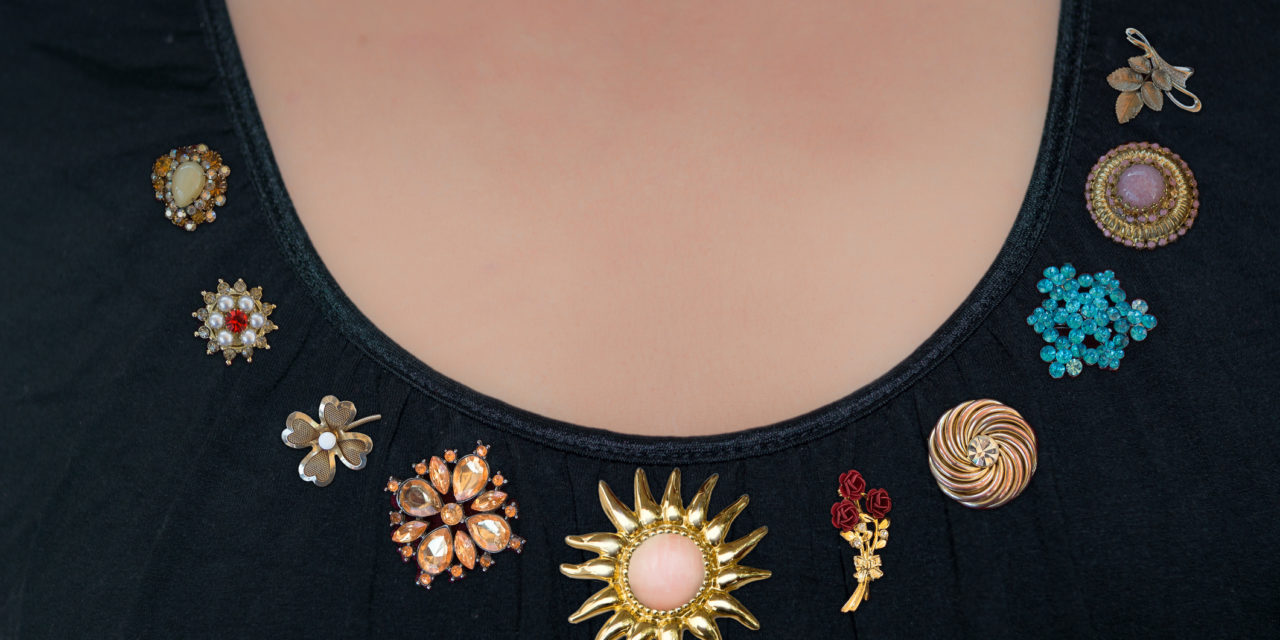Brooches are making a comeback. Picture the golden globe awards. The winning producer of a television documentary walks on stage with 11 brooches on her lapel! While in the seventies and eighties, style would have dictated a single prominent brooch and would have been a colorful bold statement, viewers were treated to an eclectic collection that included samples of styles from the past mixed with contemporary pieces on the same lapel. The mix reflected a comeback of the brooch in a bold way.
Brooches were first worn in medieval times although they were called fibulae and used primarily as a fastener. In a sense, they were functional jewelry.

Victorian young woman wearing brooch
In Victorian times, the function changed but brooches were still very utilitarian. Articles of necessity were attached to a single brooch or on multiple chains connected to the same brooch. There might be a thimble, a scissor, thread or a needle. Women of means might have a perfume bottle or a mirror attached. The brooch could possibly even have smelling salts attached. Around this time, as well, a woman might wear a brooch to memorialize a family member. The brooch might have been a portrait. Brooches made of black enamel or onyx were common. Some were even made of hair. In the early 1900’s tiny bar pins were used to hold undergarment straps in place.

Woman in evening gown with brooch
Enter the glamour scene in Hollywood in the 1930’s. Women were wearing art deco double clips on their gowns. They were sometimes worn separated on both sides of the collar. This was a style worn by Hollywood actresses such as Gloria Swanson, Heddy Lamar, and Carol Lombard. There double clips were also worn as one larger piece on a woman’s waist sash. This is yet another example of how jewelry was often multifunctional.
In the 1940’s brooches were represented by bold polished ribbon swirls in either yellow or rose gold. In the fifties, brooches moved toward varying shapes of diamonds set in bold platinum spray motifs. During the next two decades, brooches lost favor. They were not prominently worn and those that were tended to be more figural.
Barbara Walters and Madeleine Albright are public figures that often wore brooches and brought the brooch back into the public eye.
Madeleine Albright documented her career as a public servant through her pin collection! Learn more. These brooches played a major role during her years of public service. Albright used her pins as quiet yet outspoken codes to foreign officials and the press. They became a remarkable tool in her diplomatic arsenal as both as Ambassador to the UN and during her tenure as Secretary Of State. Ms Albright published a book called Read My Pins. There is also a traveling exhibit with the same name recently shown at the Legion of Honor in San Francisco. Read Madeleine Albright on Her Life in Pins to learn more.
The brooch has an illustrious and rich history spanning many decades. The secondary or auction market is a natural match for buying and selling this form of jewelry. Clars Auction Gallery has sold a magnificent collection of brooches. The range of pieces include styles such as figural pieces, Victorian pieces, swirl motifs and double clips. They created much excitement from collectors as well as those who were just interested in a single piece.
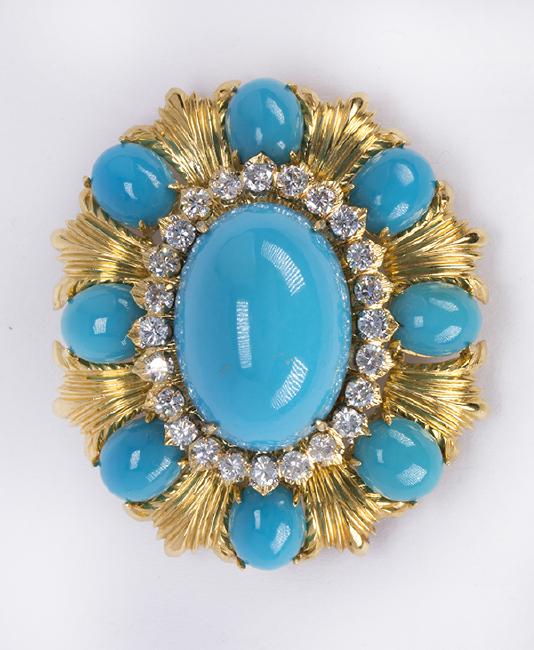
Turquoise, diamond and 18K yellow gold flower brooch. Hammer price $3,000.
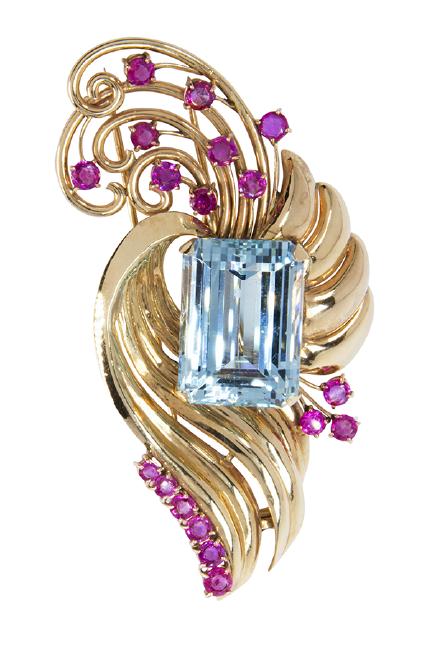
Aquamarine, ruby and 14k yellow gold brooch. Hammer price $2,250
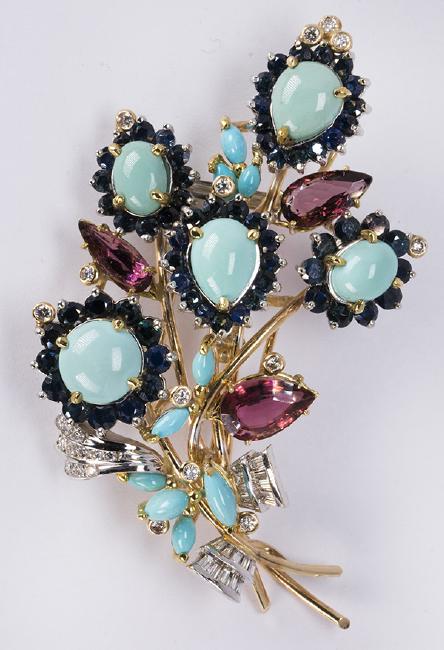
Turquoise, sapphire, garnet, diamond and yellow gold. Hammer price $1,400.
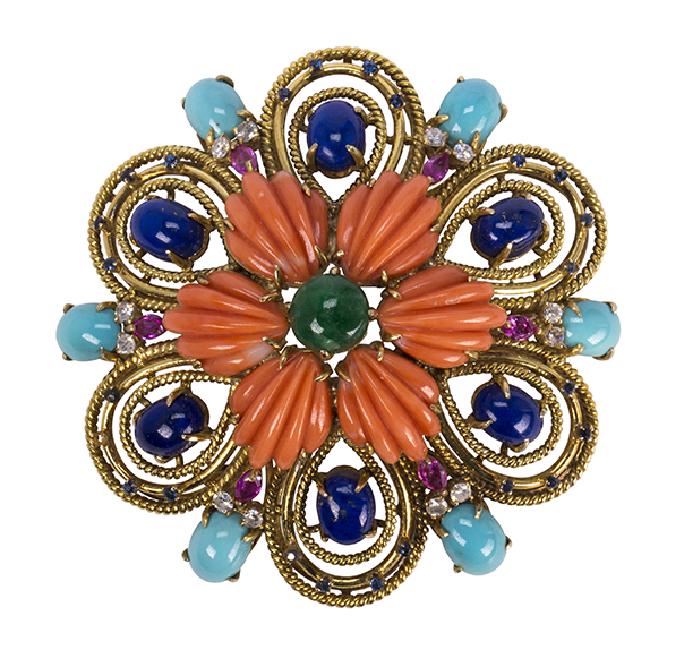
Multi-stone, diamond and 18k yellow gold flower. Hammer price $1,100.
